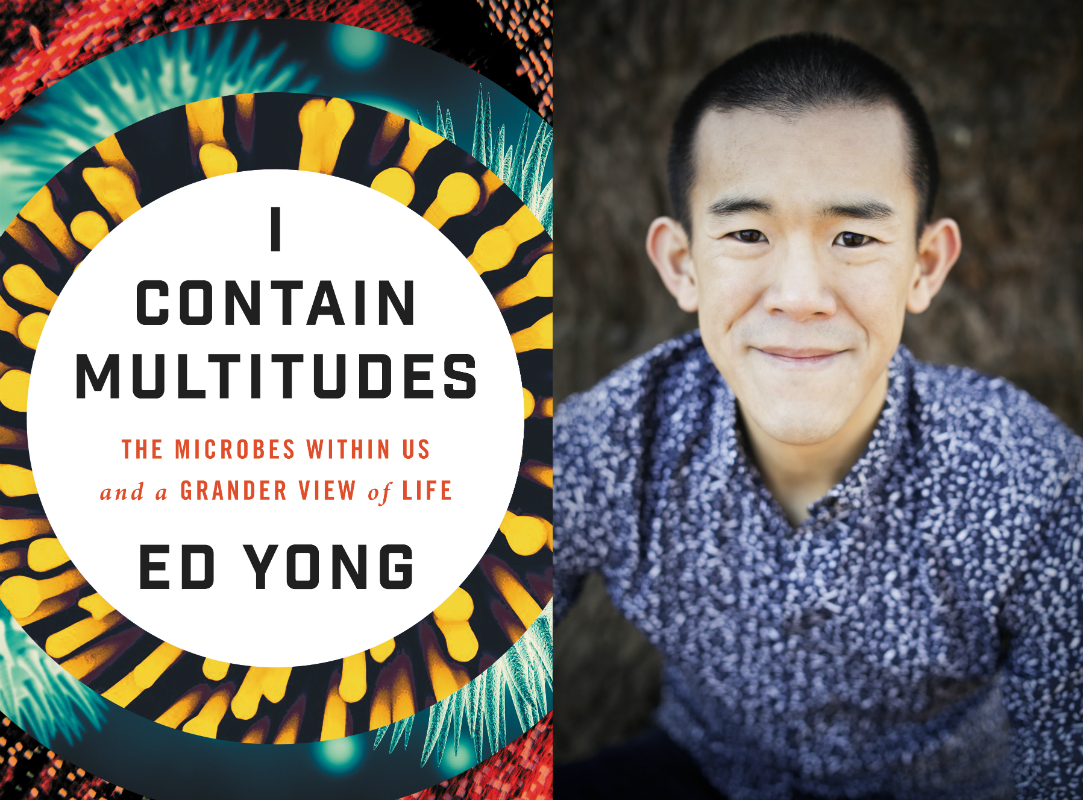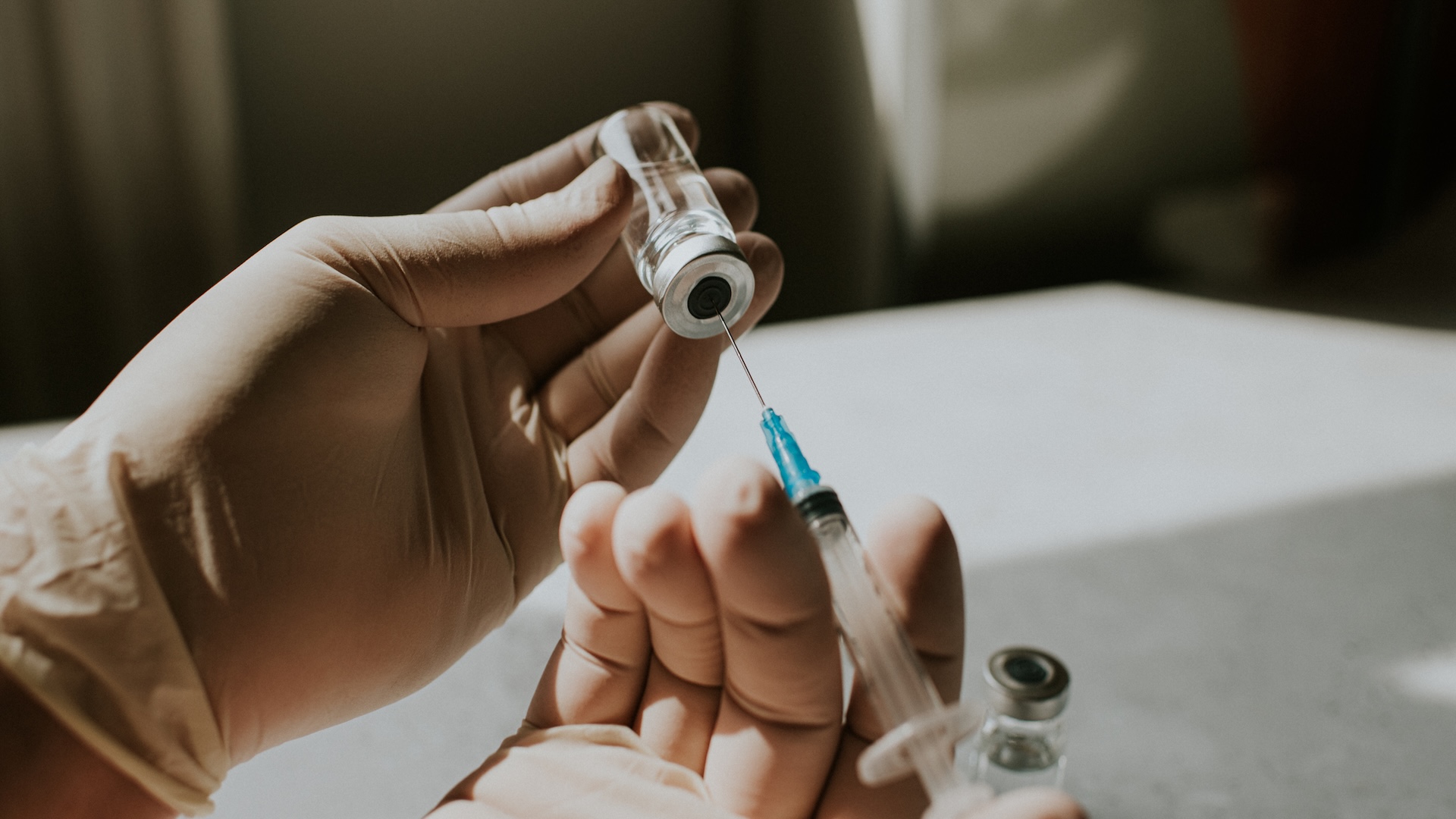'I Contain Multitudes' Is the Story of Microbes: Q&A with Ed Yong

Right this very minute, trillions of microbes — bacteria, fungi and viruses — are jockeying for space on every inch of your skin and in every crevice of your body. And that's a good thing, because you'd have a hard time surviving without them.
All animals, including humans, are teeming with microscopic life on every surface of their bodies, inside and out. These microorganisms help their hosts extract nutrition from otherwise indigestible foods, regulate immune systems and can even influence behavior.
Certain microbes are known for causing infection and disease, but the communities of microbial life you live with aren't hostile invaders — nor are they wandering strangers. Rather, they form a vast, interconnected microbial web called a microbiome that interacts with a host species in highly specialized ways, and may even have played a part in shaping their evolution. [Magnificent Microphotography: 50 Tiny Wonders]
The complex dance between microbes and the animals they inhabit comes under close scrutiny in science writer Ed Yong's new book "I Contain Multitudes: The Microbes Within Us and a Grander View of Life" (Ecco, 2016).
Yong — a staff writer for The Atlantic and a contributor to The New York Times, National Geographic, and the journals Nature and Science, among other publications — recently spoke with Live Science about how scientists are deciphering microbial interactions within a wide range of species, and how that's changing the way researchers understand animal biology and behavior.
(This Q&A has been edited for length and clarity.)
Live Science: What made it possible for microbes to successfully infiltrate and colonize so many different forms of animal life?
Get the world’s most fascinating discoveries delivered straight to your inbox.
Ed Yong: One of the themes in "I Contain Multitudes" is that it's a microbial world — we're just living in it. Microbes have been around for billions of years. They were the first organisms on the planet, and they had the full run of it well before we arrived on the scene. Humans and other animals evolved in a world that was already teeming with microbes — we evolved to make use of that, and we evolved to live within it.
In the book, I talk about how microbes shape the guts of fish and mice and other organisms, and throughout, I was interested in the question of why that should be. Why have we outsourced these important aspects of our lives?
I think the answer is that there was no other choice. We evolved with microbes, and it was just a useful, advantageous thing to do, to co-opt signals and molecules that they were already producing. From the microbes' perspective, by partnering with animals they've created new worlds to exploit.
Take plant-eating animals that rely on microbes to digest tough carbs that they lack the genetic capacity to break down. You could think of it as the animals recruiting microbes, but they've also created habitats for those microbes to inhabit — they've expanded parts of their guts into fermentation chambers for microbes to do their thing.
Live Science: In your book, you propose overturning the idea that there are "good microbes" and "bad microbes." Why?
Yong: For a long time, people feared microbes; we thought of them as germs to be destroyed. Now, there's a counter narrative of microbes as being friendly and beneficial. I think the truth lies in the middle — these are organisms that don't have our interests at heart. They're living out their own lives. Sometimes, that aligns with our interests, and sometimes it doesn't. We know gut microbes are critical for digestion, for training the immune system, and for helping to control growth and the development of our organs. But if they cross the lining of the gut and get into the bloodstream, the very same bacteria can cause inflammation and sepsis [a potentially life-threatening complication of an infection] and all kinds of problems.
We need to appreciate that those relationships are always contextual. Whether something is a parasite [an organism that lives off of a host] or a pathogen [an organism that causes an illness or disease] or a mutualist [an organism that engages in a mutually beneficial relationship another organism], these are not inherent states of being. [Tiny & Nasty: Images of Things That Make Us Sick]
Live Science: What are some of the recent discoveries about our microbiomes that are changing the way scientists think about human health?
Yong: We've known for a long time that the human body is home to trillions of microbes and that they play important roles in our lives. I think what's now becoming clear is just how important they are. One of the most important aspects of this is the link between the microbiome and disease.
Many scientists have found correlations between the presence of certain microbes and the diversity of the entire [microbial] community, and various health disorders — everything from obesity to diabetes to heart disease to colorectal cancer. The critical question now is, are changes in the microbiome actually driving disease and poor health, or are they a consequence of that? If they do have a causal role, how important are they compared to genetics, or the food we eat, or other aspects of our environment? In many cases, the answer is: We don't know.
A lot of microbes that live with us haven't been identified, so it's really hard to know why my microbiome, for example, is different from yours, and which parts of our lives account for those variations. We can only really account for 10 percent of variation between people. Factors that make our microbiomes different are still largely unknown to us, so it's no surprise that we're still in the infancy of trying to understand how they're related to health and disease, and how we might be able to pull on that lever to make our lives better.
Live Science: As you were researching and writing "I Contain Multitudes," what was the most surprising thing you learned about microbes and their animal partners?
Yong: One of the stories I really liked in the book involves an insect called the citrus mealybug, a pest that lives off plant sap. It's got bacteria living in its cells, as do many other sap-sucking bugs. But this one is special, because those bacteria also have bacteria living in them! So, we have microbes inside microbes inside an animal — like a living Russian doll. But what's astonishing is how all three of those partners cooperate. [Body Bugs: 5 Surprising Facts About Your Microbiome]
There are some essential amino acids that insects need and can't get from plants, and to make that amino acid, you need a production line of different enzymes. And all three partners cooperate to make those enzymes. Without any one member of the partnership, the whole thing collapses. That's astonishing to me, how intricate that is — that something like that evolved speaks to how surprising this world of animal-microbe partnerships can be.
Live Science: Has immersing yourself in the world of microbes and microbiomes changed your perception of who you are? Do you see yourself now as more of a committee of trillions than an individual?
Yong: Sure, and I think that's the point. I think about the multitudes that live on my skin, in my mouth, in my guts. I think about the ways in which they're shaping my immunity. They're certainly helping to digest my food; maybe they're changing my moods.
All the natural-history books I grew up with, the David Attenborough documentaries on my shelf — they only show part of the picture. There's this other, almost invisible, layer to our biology that we either don't understand, or take for granted, or sometimes fear.
All these parts of my life that seem very commonplace and familiar actually take on this wondrous new side. It's awesome and fascinating, and I can't help but see myself in a different light.
"I Contain Multitudes: The Microbes Within Us and a Grander View of Life" was published Aug. 9.
Original article on Live Science.

Mindy Weisberger is a science journalist and author of "Rise of the Zombie Bugs: The Surprising Science of Parasitic Mind-Control" (Hopkins Press). She formerly edited for Scholastic and was a channel editor and senior writer for Live Science. She has reported on general science, covering climate change, paleontology, biology and space. Mindy studied film at Columbia University; prior to LS, she produced, wrote and directed media for the American Museum of Natural History in NYC. Her videos about dinosaurs, astrophysics, biodiversity and evolution appear in museums and science centers worldwide, earning awards such as the CINE Golden Eagle and the Communicator Award of Excellence. Her writing has also appeared in Scientific American, The Washington Post, How It Works Magazine and CNN.


